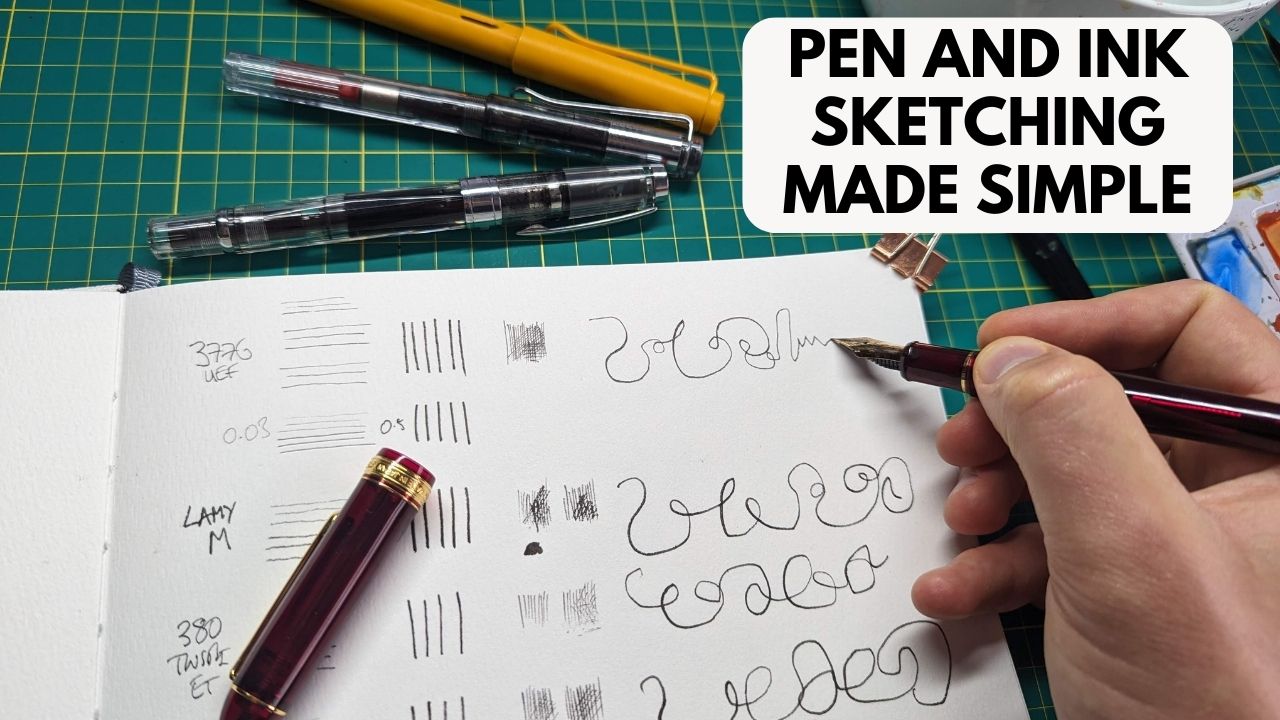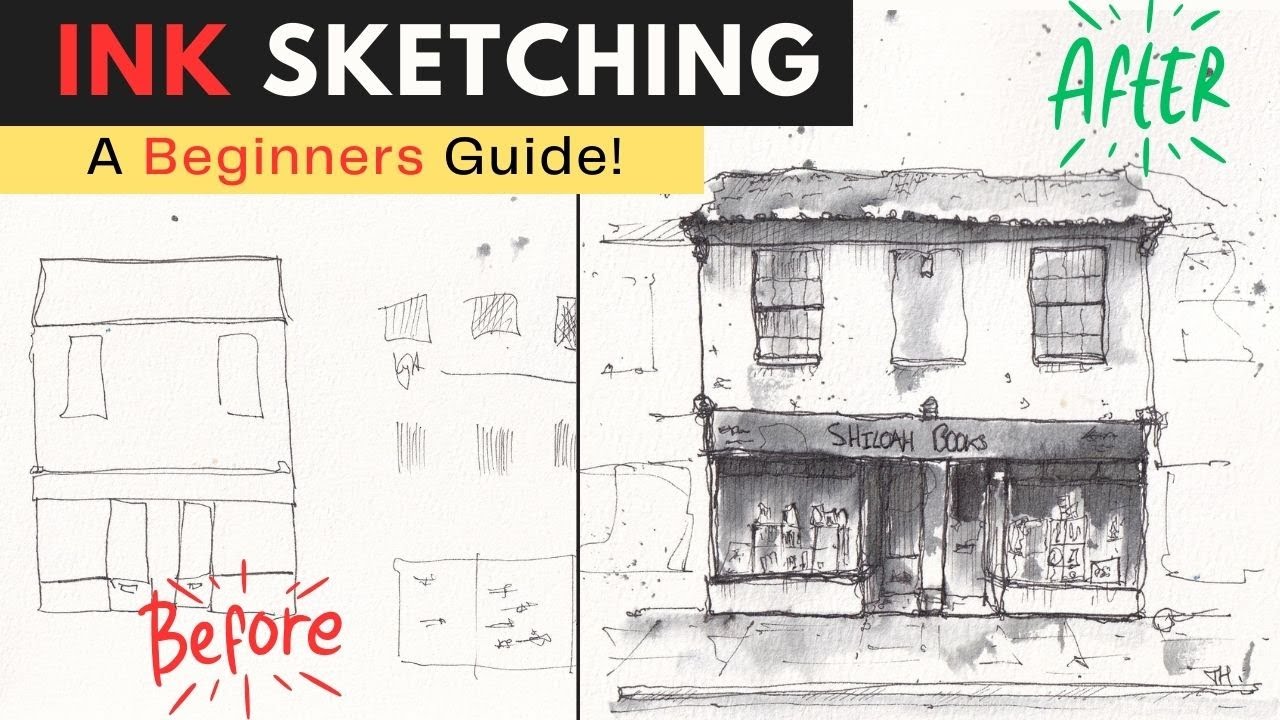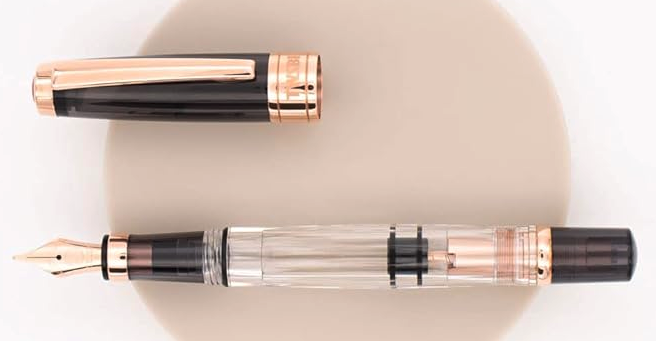Ink and Pen Supplies
This post features affiliate links from Jackson's Art and Amazon - I earn a small commission should you choose to purchase from them. This does not affect the price you pay, though, for a first order with Jackson's art you may also be eligible for 10% off.
Pen and ink sketch! In a nutshell :)
I believe that Pen and Ink sketching can be distilled into just two really key concepts - and with a little practice that is all you might need to learn.
I have a range of specific and general tutorials on YouTube that give a relaxed and fun introduction to this subject.
There are other aspects to ink sketching that require a deeper bit of thinking, and one of those is the supplies we might use.
So the rest of this post will be dedicated to just that!
Toby’s Take on Supplies
Fine Liner Pens: Fine liner pens are known for their precision and consistent line width. They are ideal for intricate details and fine lines in your sketches. Their reliability makes them a top choice for technical drawing and outlining.
- With fine liners, most brands are quite similar in price, my biggest tip is buy the ones on sale and in sets. I have slight brand preferences, but not enough to want to buy fully priced pens vs cheaper ones!
THIS PAGE on Jackson's art shows you the shear volume of different pens available. I do prefer UniPin or Winsor Newton... but only just!
Fountain Pens: Fountain pens offer a smooth and elegant writing experience. Their ink flow can be adjusted through different inks, nibs and pressures, allowing for various line thicknesses and shading effects. Fountain pens are beloved for their timeless style and the personal touch they bring to your writing or artwork. They also have the key advantage of being eco friendly and refillable – more on this below.
- Great budget options are Platinum Preppy pens, and Lamy Safari pens. There are, however, many other very good options.
Fude Pens: Fude pens have a unique bent or angled nib that allows you to create both thick and thin lines with a single stroke. They are versatile tools for calligraphy and expressive brush-like effects in your sketches.
- The main ‘fountain pen’ like fude pen that I use is by Sailor, I also love the disposable TomBow fude pen.
Brush Pens: Brush pens combine the convenience of a pen with the expressive qualities of a brush. They offer varying line widths based on pressure, making them excellent for calligraphy, lettering, and creating dynamic strokes in your artwork.
Dip Pens: Dip pens offer complete control over your ink flow and line thickness. They require dipping the nib into ink, allowing for a wide range of ink colors and styles. Dip pens are favored by artists for their ability to create fine details and intricate patterns.
- There are loads of cheap brands here to choose from, the pen itself is simply a stick to hold The magic comes from the nibs which come in all sorts of sizes and prices.
- Don’t forget, you can also use sticks, glass pens, and more!
Posca Pens: Posca pens are versatile markers known for their opacity and vibrant colors. They work well on a variety of surfaces, including paper, wood, and even fabric. Their versatility makes them perfect for poster art, signage, and adding bold details to your illustrations.
- These are technically not ink, as they have acrylic in them. But they are very popular so I’m including them as a bonus.
Each type of pen brings its unique advantages to the table, allowing artists, writers, and creators to choose the tool that best suits their style and creative needs.
Want to find out more?
Join my in depth SkillShare class, looking at supplies, techniques and creating art.

You can find this class by clicking this link -- HERE
If you join using my referral link you'll get one month free from a SkillShare membership, access to all of my classes instantly, and the rest of the SkillShare library too!
Types of Fountain Pen Inks:
Water-Soluble vs. Permanent Inks:
Fountain pen inks come in two primary categories: water-soluble and permanent inks. Water-soluble inks, also known as dye-based inks, are easy to clean and offer a wide range of vibrant colours. However, they can be susceptible to smudging and water damage.
On the other hand, permanent inks, such as pigment-based or archival inks, are resistant to water and fading. They are ideal for documents that require long-term preservation but can pose a risk if not used correctly in fountain pens.
Risk of Pigment Inks:
Pigment-based inks, while permanent, can be risky for fountain pens. Some pigments may clog the narrow ink channels in fountain pen feeds, leading to flow issues. However, some fountain pens are designed to handle pigment inks without problems. Always check your fountain pen's compatibility with pigment inks and clean it regularly to prevent clogging.
- My favourite pigment (permanent) inks are SketchINK (find it HERE) and Platinum’s Carbon Black ink (find it HERE).
- My favourite soluble inks are Waterman inks, and Diamine inks (find them HERE).
Filling and Caring for Fountain Pens:
Key Points of Fountain Pen Care: Proper fountain pen care is essential to ensure smooth and reliable writing. Here are some key care points:
- Clean your fountain pen regularly by flushing it with water to remove residual ink.
- Avoid letting ink dry out inside the pen, as it can lead to clogs.
- Store your fountain pen with the cap securely closed to prevent the nib from drying out.
- Use a soft cloth to wipe the exterior of your pen to maintain its appearance.
Use of Cartridges, Ink Converters, and Barrel-Filled Pens:
- Cartridges: Cartridges are pre-filled ink containers that are convenient and mess-free. Simply insert a cartridge into your pen, and you're ready to write. They come in various colours and are disposable once empty.
- I avoid these if possible, as they are expensive and not eco friendly.
- Ink Converters: Ink converters are reusable accessories that allow you to draw ink from a bottle into your pen. They are ideal for using bottled inks and offer more ink colour choices. To fill your pen with an ink converter, submerge the nib in the ink, and twist the converter to draw ink into the pen's reservoir.
- I use these in my Platinum pens and LAMY pens.
Here is an example of a platinum converter. And below is a LAMY converter too.
- Barrel-Filled Pens: Some fountain pens have built-in ink reservoirs in their barrels. To fill these pens, unscrew the barrel, dip the nib into the ink bottle, and use a piston or vacuum mechanism to draw ink into the pen. Barrel-filled pens can hold more ink than converters or cartridges.
- Great examples are TWSBI pens (find my favourite diamond 580 here) and Noodler’s pens.
In summary, fountain pen inks come in water-soluble and permanent varieties, with considerations for care and the type of ink used. Whether you prefer cartridges, ink converters, or barrel-filled pens, proper maintenance is key to ensuring your fountain pen's longevity and performance.
India Inks and Dipping Pens
These are a cheap and wonderful ink - available in many colours. You can find them HERE at Jackson's Art. Or HERE on Amazon.
Usage with Dipping Pens: India inks are highly pigmented and traditionally used with dipping pens or brushes. To use them with a dipping pen:
- Prepare a clean, smooth surface and set up your dipping pen.
- Dip the nib of the pen into the India ink bottle, making sure not to submerge it too deeply.
- Remove any excess ink by gently tapping the nib against the rim of the bottle.
- Begin your artwork or calligraphy. The ink should flow smoothly from the nib, allowing for bold, dark lines and intricate details.
Dipping pens are also cheap and affordable, this set from Jackson's Art features 10 nibs for just £10.50! (available worldwide)
Why India Inks Aren't Safe in Fountain Pens: India inks, although rich and permanent, are not recommended for use in fountain pens. This is because they contain finely ground particles and pigments that can clog the narrow channels and feeds of most fountain pens, leading to flow issues and damage over time. Fountain pens are designed for use with fountain pen inks, which have a different composition and are less likely to cause clogs.
Combining Colors: One of the appealing aspects of India inks is their ability to combine and layer colors for artistic effects. To create custom colors or gradients:
- Start with a palette of India ink colors in small containers.
- Use a dipping pen, brush or dropper to mix and apply the inks on your artwork or paper.
- Blend the colors while they are still wet to achieve smooth transitions or unique shades.
- Experiment with different combinations to achieve your desired visual effect.
Versatility with Other Tools:
India inks are not limited to just dipping pens. They are versatile and can be used with various artistic tools, such as brushes, airbrushes, technical pens, and even as a wash when diluted with water.
This versatility allows artists to explore different techniques, from fine details to broad strokes, making India inks a popular choice in the world of traditional and mixed-media art. In summary, India inks are highly pigmented, permanent inks best suited for use with dipping pens and a variety of other artistic tools.
While they offer versatility and rich colour options, they should not be used in fountain pens due to their potential to clog the pen's mechanisms. Explore and experiment with India inks to add depth and vibrancy to your artwork.
Find a glass dipping pen here - https://amzn.to/46c8XMH



